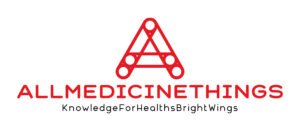Anatomy
- Anatomy
- Anesthesiology
- Biochemistry
- Cardiology
- Child and adolescent psychiatry
- Clinical Medicine
- Community Medicine
- Critical Care
- Dentistry
- Dermatology
- Dietetics
- Emergency medicine
- Family medicine
- Forensic Medicine
- Hematology
- Hepatology
- Immunology
- Infectious diseases
- Internal Medicine
- Medical technology
- Neurology
- Nursing
- Obstetrics and Gynaecology
- Oncology
- Ophthalmology
- Otolaryngology (ENT)
- Pathology
- Pediatrics
- Pharmacology
- Physiology
- Psychiatry
- Pulmonology
- Radiology
- Reproductive Medicine
- Rheumatology
- Sports medicine
- Surgery
- Urology
Anatomy is the scientific study of the structure and organization of living organisms. It involves examining the arrangement and relationship of various body parts, tissues, and organs within the body. Anatomy provides a fundamental understanding of how living organisms are constructed and how their different components work together to maintain life.
There are several branches of anatomy that focus on different levels of organization:
Gross Anatomy: Also known as macroscopic anatomy, this branch deals with the study of structures that can be seen with the naked eye. It involves the examination of organs, tissues, and body systems through dissection and visualization.
Microscopic Anatomy: This branch involves the study of structures that are too small to be seen with the naked eye. It includes histology, which examines the tissues of the body using microscopes, and cytology, which studies individual cells.
Developmental Anatomy: Developmental anatomy explores how organisms grow and develop from a single cell into a complex multicellular structure. It investigates the changes that occur during embryonic, fetal, and postnatal development.
Comparative Anatomy: This branch involves the comparison of the anatomical structures of different species to identify similarities and differences. Comparative anatomy contributes to our understanding of evolutionary relationships between organisms.
Functional Anatomy: Functional anatomy focuses on how anatomical structures enable various functions within the body. It studies how organs and tissues work together to perform specific tasks.
Radiographic Anatomy: Radiographic techniques such as X-rays, CT scans, and MRIs provide images of internal structures, allowing anatomists to study and diagnose conditions without invasive procedures.
Anatomy is a vital foundation for various medical and scientific disciplines, including medicine, surgery, physiology, and biology. Medical students and healthcare professionals, such as doctors and surgeons, rely on a thorough understanding of anatomy to diagnose illnesses, plan surgeries, and provide effective treatments.
In recent years, technological advancements have transformed the way anatomy is studied. Virtual anatomy software, three-dimensional modeling, and interactive learning tools have enhanced the educational experience for students and professionals.
In conclusion, anatomy is a critical field that serves as the basis for understanding the structure and organization of living organisms. It provides insights into how the body’s components interact and function, playing a pivotal role in medical practice, research, and education.

